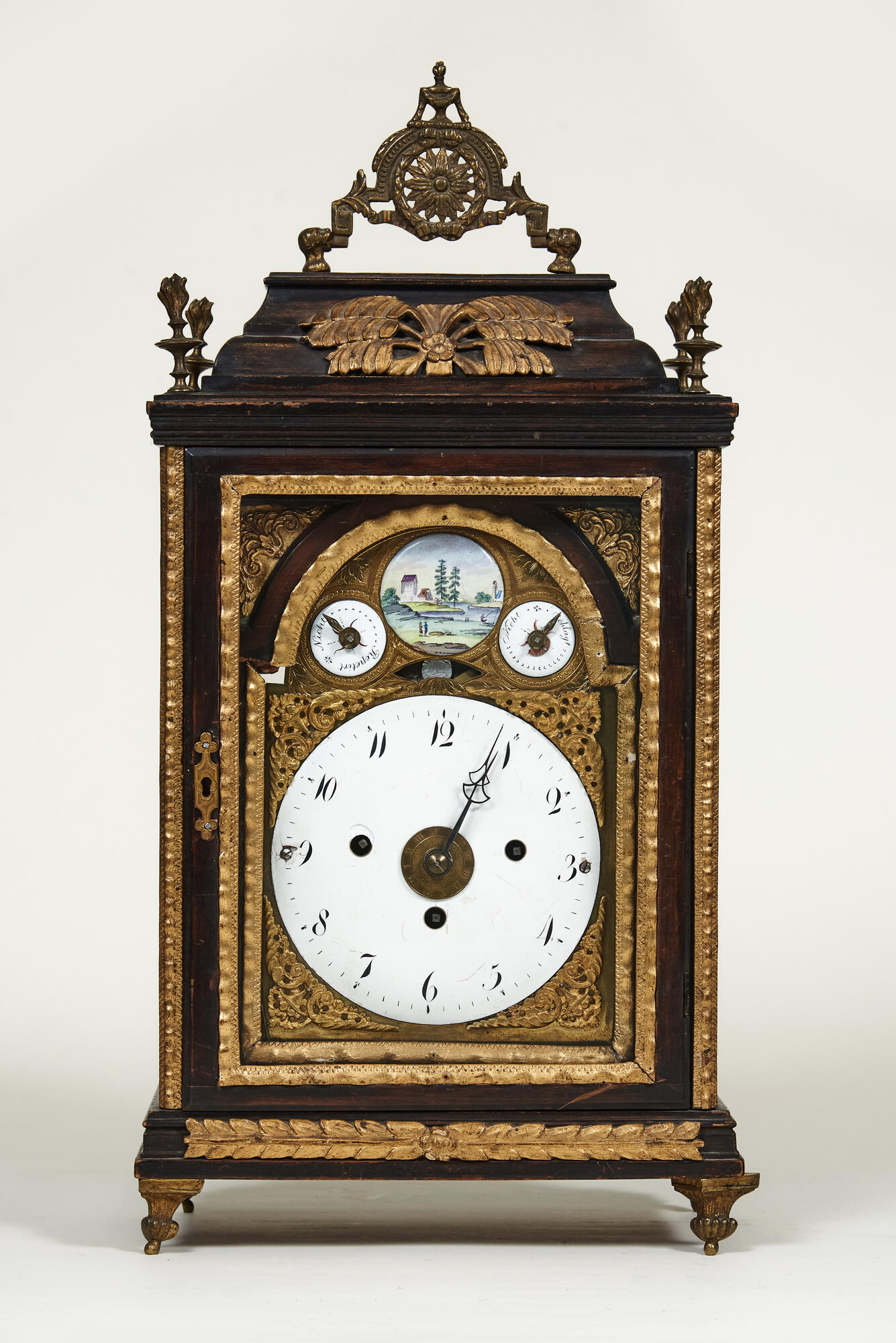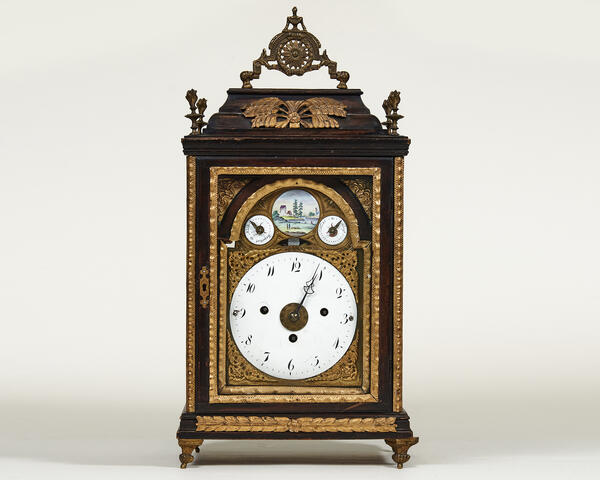English clockmakers have started using springs in clock movements since the mid-16th century. This decision was somewhat of a revolution among the artisans. The spring replaced the pendulum, so the height of a clock case could be significantly reduced. Initially, the clocks were made along with the console. This explains the name of the clock: the French word ‘console’ means the small wall-mounted shelf, where the clock was put. The console, as well as the clock case, was made of wood.
The shape and design of the clock from the museum collection resemble traditional English console clocks of the 18th — early 19th century. English and French clockmakers were the leading specialists in this field throughout the whole 18th century. English console clocks differed from the French clocks by their simple design. Often such items looked like usual ‘cabinets’. English clockmakers paid great attention to the clock movement itself, that is why they were outperformed by the German and Swiss clockmakers only in the 19th century.
The clock from the museum collection is adorned with enamel, which was not the only decorative technique available. In the late 17th century, André Charles Boulle, the cabinetmaker at the court of the French King Louis XIV, revived the tradition of marquetry and the inlay of tortoiseshell and brass. Marquetry was also used to decorate clocks. Tortoiseshell and brass were used to create patterns and designs on wooden cases.
As a rule, the case was made of finest woods — walnut, olive, and mahogany. According to the legend, an English cabinetmaker Thomas Chippendale was the first to use mahogany wood that was imported to England. It was valued for its durability and color, and as a result, it gradually replaced walnut, which used to be the clockmakers’ favorite material.
The face of an English mantel clock was often decorated with cast bronze cover plates and openwork patterns depicting floral scrolls, dolphins, flowerpots. The back of the clock had elaborate engravings. The English mantel clock’s movement deserves special attention. Traditionally, such clocks had several functions — quarter striking, a repeater (a device, chiming the time at the press of a button), a locking plate, a second hand, a calendar dial, and a display of moon phases. The latter is the reason for calling a clock like this ‘astronomical’.
The shape and design of the clock from the museum collection resemble traditional English console clocks of the 18th — early 19th century. English and French clockmakers were the leading specialists in this field throughout the whole 18th century. English console clocks differed from the French clocks by their simple design. Often such items looked like usual ‘cabinets’. English clockmakers paid great attention to the clock movement itself, that is why they were outperformed by the German and Swiss clockmakers only in the 19th century.
The clock from the museum collection is adorned with enamel, which was not the only decorative technique available. In the late 17th century, André Charles Boulle, the cabinetmaker at the court of the French King Louis XIV, revived the tradition of marquetry and the inlay of tortoiseshell and brass. Marquetry was also used to decorate clocks. Tortoiseshell and brass were used to create patterns and designs on wooden cases.
As a rule, the case was made of finest woods — walnut, olive, and mahogany. According to the legend, an English cabinetmaker Thomas Chippendale was the first to use mahogany wood that was imported to England. It was valued for its durability and color, and as a result, it gradually replaced walnut, which used to be the clockmakers’ favorite material.
The face of an English mantel clock was often decorated with cast bronze cover plates and openwork patterns depicting floral scrolls, dolphins, flowerpots. The back of the clock had elaborate engravings. The English mantel clock’s movement deserves special attention. Traditionally, such clocks had several functions — quarter striking, a repeater (a device, chiming the time at the press of a button), a locking plate, a second hand, a calendar dial, and a display of moon phases. The latter is the reason for calling a clock like this ‘astronomical’.



